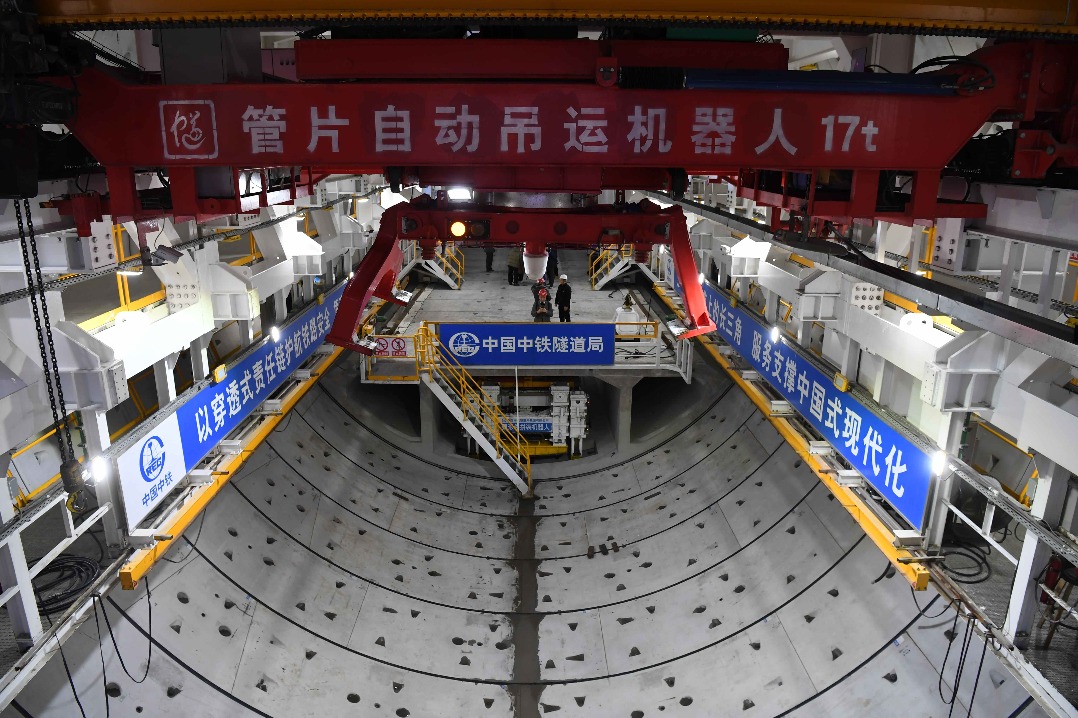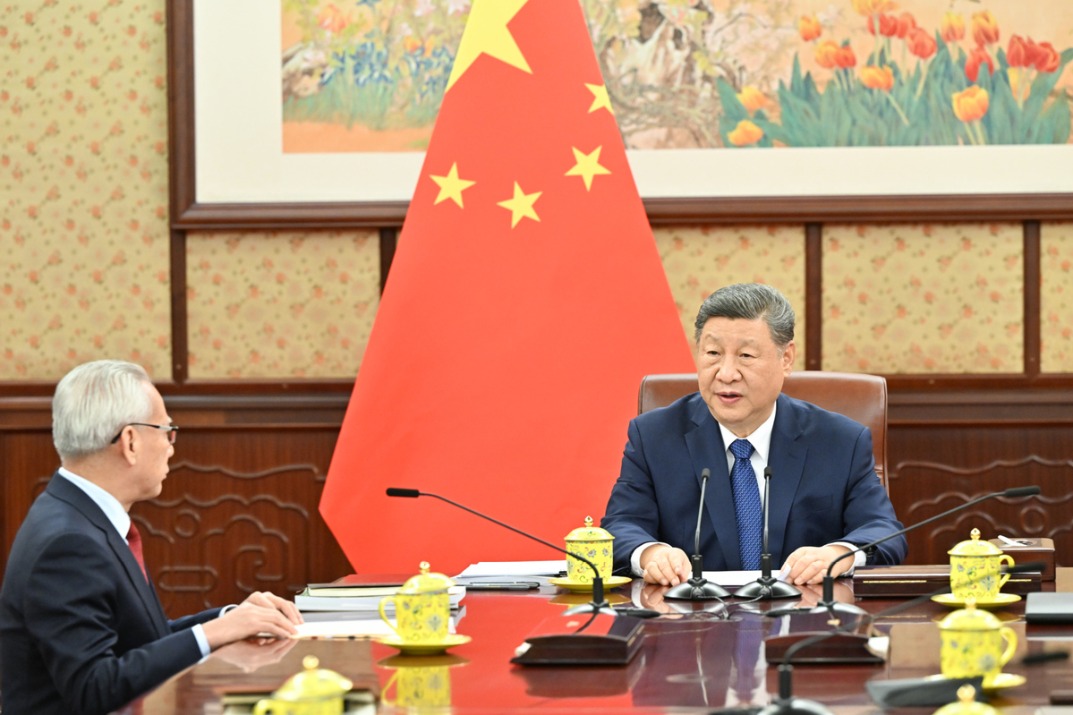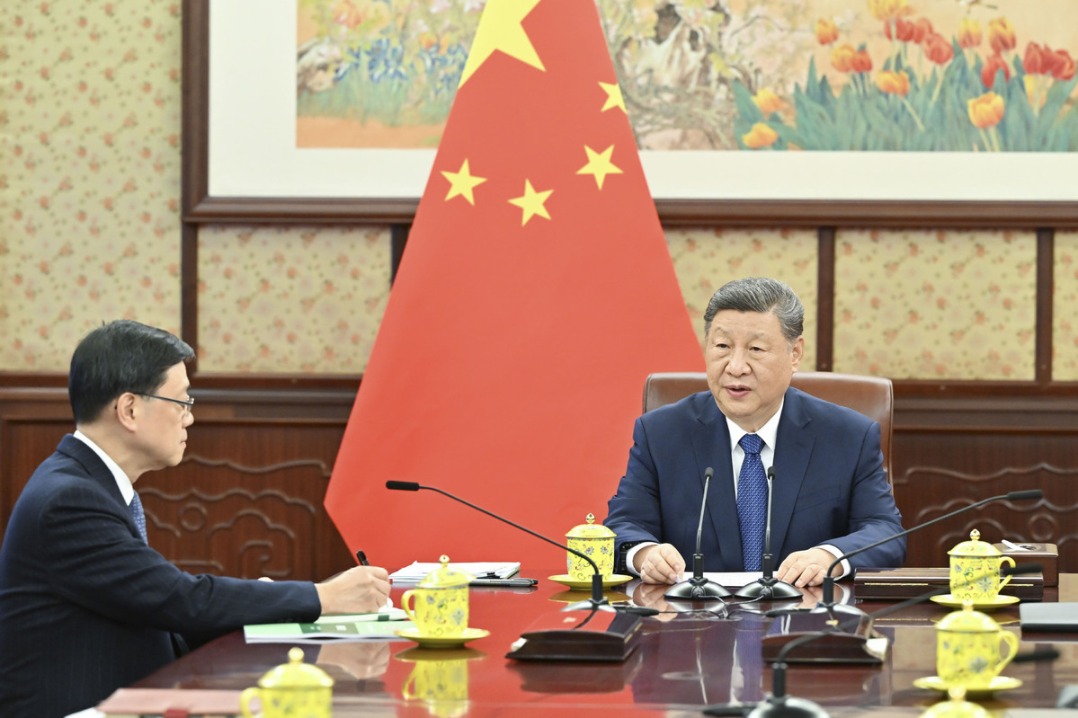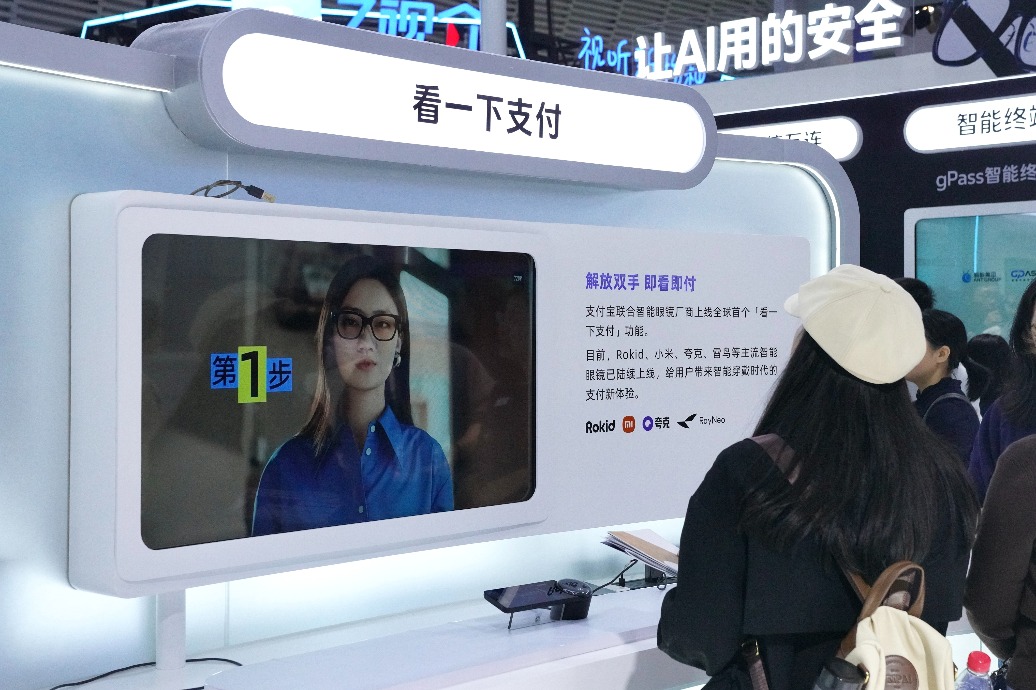Father's spirit lives on for a modern cave man

In ancient times when creating murals in the Mogao Grottoes, artists depicted not only stories and images from Buddhist classics, but also those of the caves' financial backers, some of which can be seen on the passage walls of caves 9, 61, 130 and 196.

Fifty-nine kilometers from the Mogao Grottoes and 3 kilometers from the Western Thousand-Buddha Cave, people living today are being given the chance to have their own likeness portrayed on the walls of Dunhuang Modern Grottoes.
Two years after Chang Shuhong, founder of Dunhuang Academy, died in 1994, his wife Li Chengxian and his son Chang Jiahuang started opening modern caves not far from the Mogao Grottoes, in accordance with the Chang Shuhong's will. They used money they had saved over the years.
Chang Jiahuang even sold some of his paintings to invest in the caves. His mother died of cancer in 2003 and left a large sum of money to finance more caves.
For two decades Chang has poured millions of yuan into the caves, in the face of a great deal of skepticism from people who question his motives. He quit his highly paid job in Japan and his wife divorced him, taking their two children with her.
"There have been many difficulties with the project, and they certainly haven't just been financial," Chang says.
He visited Japan earlier this year and signed a two-year contract with an organization called Japan-China Cultural Exchange Promotion, which will entail both parties working on developing Cave 5 of Dunhuang Modern Grottoes. Chang says, he will foot the cost of design and construction.
Objections to the work from his son and elder sister have dented his morale, he says.
Chang Shana, his sister, is a former president of the Central Academy of Art and Design in Beijing. In a previous interview she said she disagreed with the idea. She once visited the modern caves and found they were built on a "precipitous cliff whose natural conditions are unsuitable for caves". In addition, "the contents of the modern caves murals are incoherent", she said.
The cliff is 30 meters above Danghe River. Each year, water slams against the foot of the cliff.
Three kilometers away, the river flow constantly shakes the Western Thousand-Buddha Cave. There are said to have originally been more than 2,000 caves, but the vibration has, over time, reduced them to fewer than 20.
In July 2008 a part of the modern caves collapsed, and a mural in Cave 1, painted by Chang Jiahuang's mother Li Chengxian, was stolen as the result of a passage being opened up.
"Police in Dunhuang helped retrieve the painting after 17 days' investigation," Chang says.
He chose the location because almost all the good spots for such a project had been included in the Mogao Grottoes protection area, an idea his parents came up with.
In a transcript of a conversation between Chang and his son provided by the father, the son says he never thought it was his father who would be paying for the project, rather than the project paying him.
Chang Jiahuang has opened 20 caves over the years and several years ago media quoted him as saying that if the project made no progress he would abandon it and seal the caves with concrete.
The plan for Cave 1 is for it to hold facsimiles of precious works from the Mogao Grottoes that were taken overseas. In Cave 2 the aim is to restore facsimiles of the best works from the Tang Dynasty (AD 618-907) to their original colors.
"Artists from all over the world are welcome to create works in two themes: environmental protection and peace," he says.
Chang, born in a Tibetan temple in Dunhuang, says a kind of Dunhuang gene runs in his blood. He stubbornly sticks to the terms of the will, he says, which keeps his father's memory alive for him.
His father once said that he preferred colorful Western paintings to Chinese traditional ink and wash. But when he saw an album of paintings compiled by Paul Pelliot, who visited the Mogao Grottoes early last century and took many precious sutra back to France, he was amazed by the beauty of this art from his hometown.
On returning to China and going to Dunhuang, he was shocked to find that much of what he saw was in ruins. He decided to stay to do his bit to protect the cultural relics.
"My father did that for the rest of his life," Chang Jiahuang says.
In building caves, he says, he is carrying out his father's wish to employ this ancient method to preserve today's culture and art for people 1,000 years hence.
(China Daily Africa Weekly 10/21/2016 page16)
Today's Top News
- Crossing a milestone in the journey called Sinology
- China-Russia media forum held in Beijing
- Where mobility will drive China and the West
- HK community strongly supports Lai's conviction
- Japan paying high price for PM's rhetoric
- Japan's move to mislead public firmly opposed






























